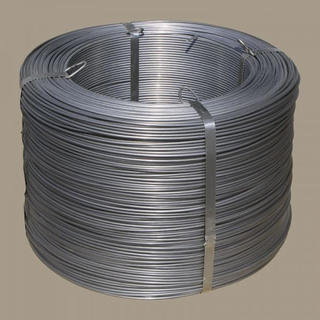Cold Drawn Wire is a high-strength steel wire produced by pulling hot-rolled wire rods through a series of dies at room temperature. This cold-working process reduces the wire's diameter while enhancing its mechanical properties, including tensile strength, hardness, and dimensional accuracy. Unlike hot-rolled wire, cold drawing refines the grain structure, resulting in a smoother surface finish and tighter tolerances.
Primarily used in construction, manufacturing, and automotive industries, cold drawn wire serves as a key material for springs, cables, fasteners, and reinforcement applications. Its superior strength and durability make it ideal for load-bearing components, wire meshes, and fencing. Additionally, it is commonly employed in precision engineering, such as medical devices and electronic components, where consistency and reliability are critical.
The wire can be further treated with coatings like galvanization or phosphating to improve corrosion resistance. Due to its versatility and enhanced mechanical properties, cold drawn wire is favored in applications requiring high performance, precision, and long-term durability. Its cost-effectiveness and adaptability make it a widely used material across various industrial sectors.
Key Aspects of Cold-Drawn Wire
Cold-drawn wire is manufactured by pulling hot-rolled wire through a series of dies at room temperature to achieve precise dimensions, improved surface finish, and enhanced mechanical properties. This process increases tensile strength and hardness while reducing ductility due to strain hardening. The cold-drawing technique ensures tighter tolerances and smoother surfaces compared to hot-rolled wire, making it ideal for applications requiring high precision, such as springs, cables, and fasteners. Additionally, the process allows for customization of wire properties through controlled reductions in diameter. Cold-drawn wire is widely used in automotive, construction, and manufacturing industries where strength and dimensional accuracy are critical. The absence of heating during drawing minimizes scale formation, resulting in a cleaner product. However, residual stresses may require annealing for certain applications.
Difference Between Hard-Drawn Wire and Cold-Drawn Wire
Hard-drawn wire and cold-drawn wire are both produced at room temperature, but hard-drawn wire undergoes minimal annealing, resulting in higher tensile strength and reduced flexibility. Cold-drawn wire, while also strong, often includes intermediate annealing steps to balance strength with ductility, making it more suitable for applications requiring bending or shaping. Hard-drawn wire is typically used where rigidity is prioritized, such as in electrical conductors or structural components, whereas cold-drawn wire is chosen for precision parts like springs or fasteners. The key distinction lies in the post-drawing treatment: hard-drawn wire retains its work-hardened state, while cold-drawn wire may be annealed to tailor its properties.
The Cold Wire Drawing Process
The cold wire drawing process involves pulling hot-rolled wire through progressively smaller dies at room temperature to reduce its diameter and enhance mechanical properties. Unlike hot drawing, this method avoids heating, relying instead on mechanical force to deform the wire. The process begins with cleaning and descaling the wire to ensure smooth drawing. Lubricants are applied to reduce friction and die wear. As the wire passes through each die, it undergoes strain hardening, increasing strength but reducing ductility. Intermediate annealing may be used to restore malleability for further drawing. The final product exhibits superior surface finish, dimensional accuracy, and uniformity.


